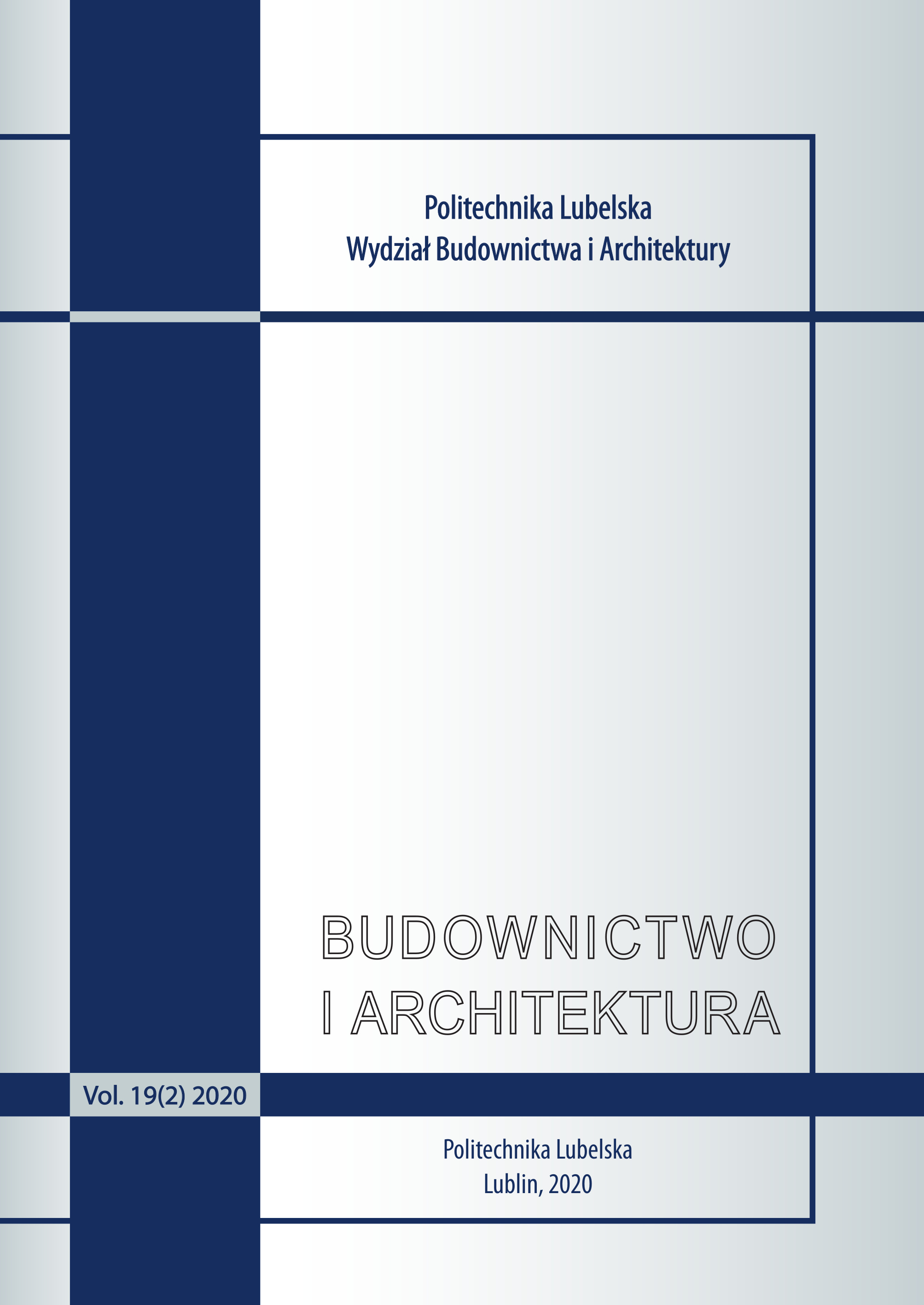Non-urban functions in urban areas as a catalyst for urban life
Justyna Kleszcz
j.kleszcz@aiu.uz.zgora.plDepartment of Architecture and Urban Planning; Faculty of Civil Engineering, Architecture and Environmental Engineering; University of Zielona Góra; (Poland)
https://orcid.org/0000-0002-7571-6367
Abstract
The paper is intended to approximate the role of multifunctional structures combining typical urban and non-urban functions into one spatial form, which make them nodal points on the local and supra-local scale. These points will be architectural forms of various scales – both those which build space through cubature and create only spatial frames – “anti-cubature”. Introduction to cities functions commonly associated with rural areas, such as agriculture in a variety of forms, animal husbandry, industrial agricultural production, is an inspiration to creating unobvious connections with housing, transportation, offi ce, education, and not only with the area of recreational green in the city. More and more often, buildings of this type become iconic elements of the city structure, both in its physical and virtual space of the “unbuilt” city. Examples of utopian visions created for major metropolises such as New York, Paris, and Vancouver show the importance of small correction of the given space functional program, allowing it to be transformed from lateral into node structure. The Pasona Urban Farm in Tokyo, visions of Vincent Callebaut, WORK Architecture Company or Terreform group, but also the more intimate Amersfoort and Villa Augustus projects in Dordrecht, Hoeve Biesland, show the power dormant in non-urban center – creating functions.
Keywords:
city, urban farming, agropolis, agrihood, urban agricultureReferences
Krier L. Architektura wspólnoty. Słowo, obraz, terytoria, Gdańsk 2011, 178.
Google Scholar
Chmielewski J.M. Teoria urbanistyki w projektowaniu i planowaniu miast. Ofi cyna Wydawnicza Politechniki Warszawskiej, Warszawa 2005, 35.
Google Scholar
Philo C. Animals. Geography and the city. Environment and planning D 13 (1995) 655–681.
Google Scholar
Pulido L. Rethinking environmental racism, Association of American Geographers 90(1) (2000) 12–40.
Google Scholar
Donaldson S., Kymlicka W. Zoopolis. A Political theory of animal rights. Oxford University Press, Oxford, 2011, 156–157.
Google Scholar
Wolch J. Anima Urbis, [w:] Architectural theories of the environment: posthuman territory (ed. A. Lourie Harrison), Routledge, Nowy Jork 2013, 233.
Google Scholar
Wolch J., Owens M. Animals in contemporary architecture and design, Humanimalia: a Journal of Human/Animal Interface Studies 8 (2017) 1–26.
Google Scholar
Monbiot G. Feral. Rewilding the land, the sea, and human life, The University of Chicago Press Books, Chicago 2014.
Google Scholar
http://www.rewildingbritain.org.uk/rewilding/rewilding-projects/the-river-wandle, 19.06.2017.
Google Scholar
http://www.rewildingbritain.org.uk/rewilding/rewilding-projects/cambrian-wildwood, 19.06.2017.
Google Scholar
Mougeot L.J.A. Agropolis. The social, political and environmental dimensions of urban agriculture, International Development Research Centre, Ottawa-Cairo-Dakar-Montevideo-Nairobi- -New Delhi-Singapore 2005, XII.
Google Scholar
Mougeot L.J.A. Urban agriculture: defi nition, presence, potential and risks, [w:] Growing cities, growing food: urban agriculture on the policy agenda. A reader on urban agriculture (ed. N. Bakker). German Foundation For International Development, Feldafi ng 2000, 99–117.
Google Scholar
Jégou F., Carey J. Handbook: Creating space for sustainable food systems in urban communities. Practical approaches and examples for cities. Strategic Design Scenarios Publishing, 2016.
Google Scholar
http://work.ac/infoodstructure/, 19.06.2017.
Google Scholar
Crocket L. Innovative self-sustaining village model could be the future of semi-urban living, [w:] http://www.archdaily.com/794167/innovative-self-sustaining-village-model-could-be-thefuture-of-semi-urban-living, 11.03.2017.
Google Scholar
Deelstra T., Girardet H. Urban agriculture and sustainable cities, thematic paper 2 Urban agriculture and sustainable cities, Resource Center on Urban Agriculture and Forestry, Leusden 2008, 48.
Google Scholar
Jacobs J. Śmierć i życie wielkich miast Ameryki. Fundacja Centrum Architektury, Instytut Kultury Miejskiej, Warszawa – Gdańsk 2014.
Google Scholar
Goodman P. COMMUNITAS means of livelihood and ways of life. Vintage Books, Random House Inc., Nowy Jork 1947, 1960.
Google Scholar
Authors
Justyna Kleszczj.kleszcz@aiu.uz.zgora.pl
Department of Architecture and Urban Planning; Faculty of Civil Engineering, Architecture and Environmental Engineering; University of Zielona Góra; Poland
https://orcid.org/0000-0002-7571-6367
Statistics
Abstract views: 231PDF downloads: 199
License

This work is licensed under a Creative Commons Attribution-NonCommercial-NoDerivatives 4.0 International License.
Budownictwo i Architektura supports the open science program. The journal enables Open Access to their publications. Everyone can view, download and forward articles, provided that the terms of the license are respected.
Publishing of articles is possible after submitting a signed statement on the transfer of a license to the Journal.








